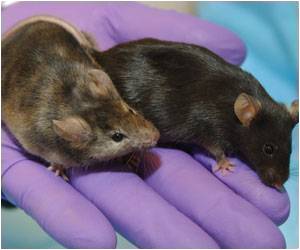Bottom Line: Eating foods high in ω-3 polyunsaturated fatty acids (PUFAs) from vegetable and marine sources may help reduce the risk for amyotrophic lateral sclerosis (ALS).

Author: Kathryn C. Fitzgerald, M.Sc., of the Harvard School of Public Health, Boston, and colleagues.
Background: PUFAs can help modulate inflammation and oxidative stress, mechanisms that have been implicated in the cause of ALS and other neurodegenerative diseases. But data regarding PUFA intake and ALS risk are sparse.
How the Study Was Conducted: Authors examined the association of ω-3 and ω-6 PUFA consumption and ALS risk in an analysis of more than 1 million people from five different study groups. Diet was assessed through questionnaires. For men, median ω-3 PUFA intake ranged from 1.40 to 1.85 grams(g)/day(d) and median ω-6 PUFA intake ranged from 11.82 to 15.73 g/d. For women, median ω-3 intake ranged from 1.14 to 1.43 g/d and median ω-6 PUFA intake ranged from 8.94 to 12.01 g/d.
Results: Researchers documented 995 ALS cases during follow-up, which ranged from nine to 24 years. A greater ω-3 PUFA intake was associated with a reduced risk for ALS. Consuming both α-linolenic acid (ALA, which can be found in plant sources and nuts) and marine ω-3 PUFAs contributed to this association. Intake of ω-6 PUFAs was not associated with ALS risk.
Discussion: "Overall, the results of our large prospective cohort study suggest that individuals with higher dietary intakes of total ω-3 PUFA and ALA have a reduced risk for ALS. Further research, possibly including biomarkers of PUFA intake, should be pursued to confirm these findings and to determine whether high ω-3 PUFA intake could be beneficial in individuals with ALS."
Editor's Note: This work was supported by grants from the National Institute of Neurological Diseases and Stroke, the National Cancer Institute and the ALS Therapy Alliance Foundation. Please see the article for additional information, including other authors, author contributions and affiliations, financial disclosures, funding and support, etc.
In a related editorial, Michael Swash, M.D., of the Royal London Hospital, England, writes: "How should this study direct our attention?"
"Fitzgerald and colleagues suggest that the fatty acid composition of cell plasma membranes, which could be measured in red cell membranes, might be important in modulating oxidative stress responses, excitotoxicity and inflammation, all factors that have been implicated in ALS and other neurodegenerative conditions," the author continues.
"As a note of caution and in contrast to their results, the authors note that in a mouse model of ALS pretreatment with high doses of eicosapentanoic acid, a long-chain ω-3 PUFA, accelerated disease progression," Swash notes.
(JAMA Neurol. Published online July 14, 2014. doi:10.1001/.jamaneurol.2014.1894. Available pre-embargo to the media at http://media.jamanetwork.com.)
Editor's Note: Please see the article for additional information, including other authors, author contributions and affiliations, financial disclosures, funding and support, etc.
Source-Eurekalert
 MEDINDIA
MEDINDIA




 Email
Email







